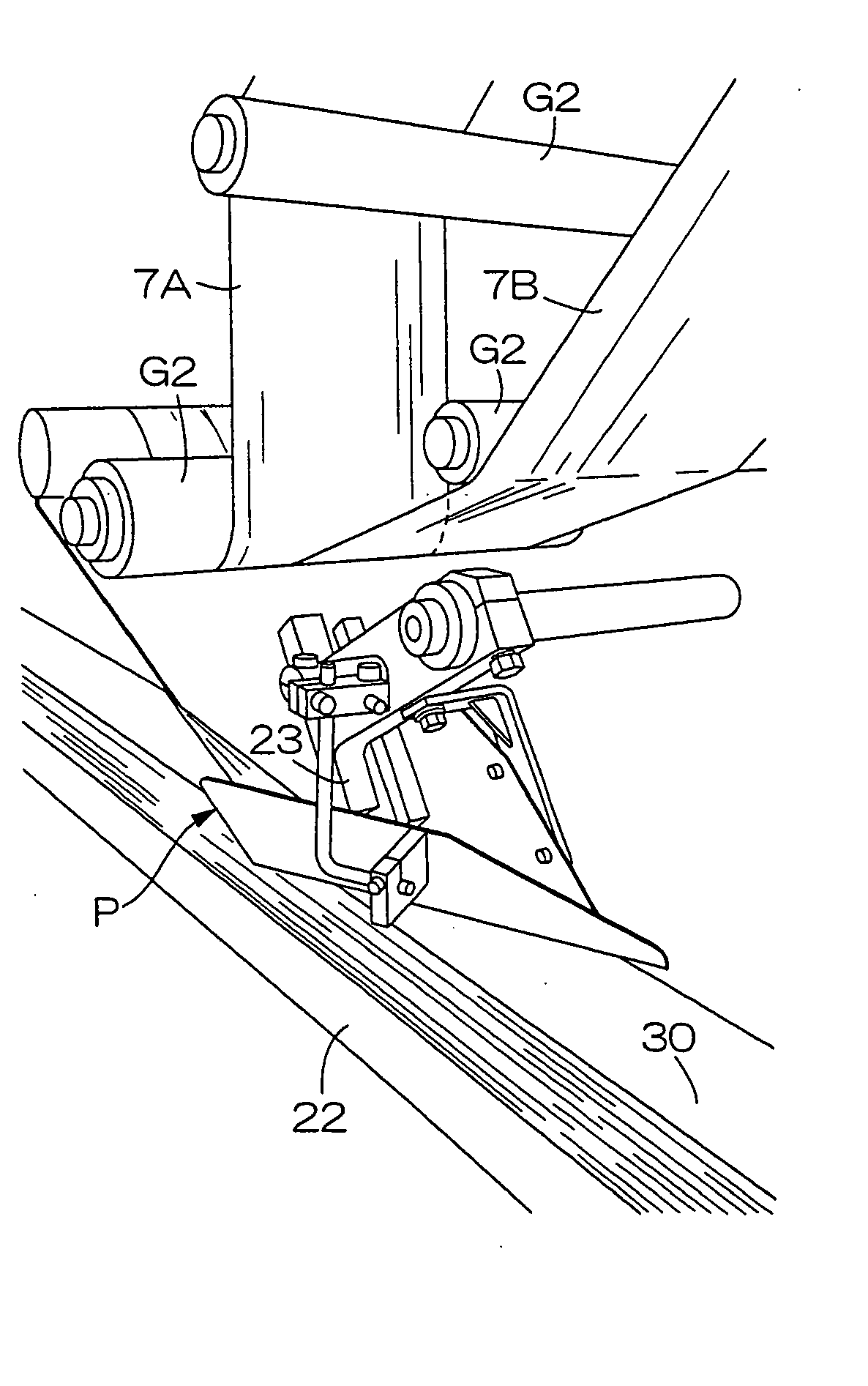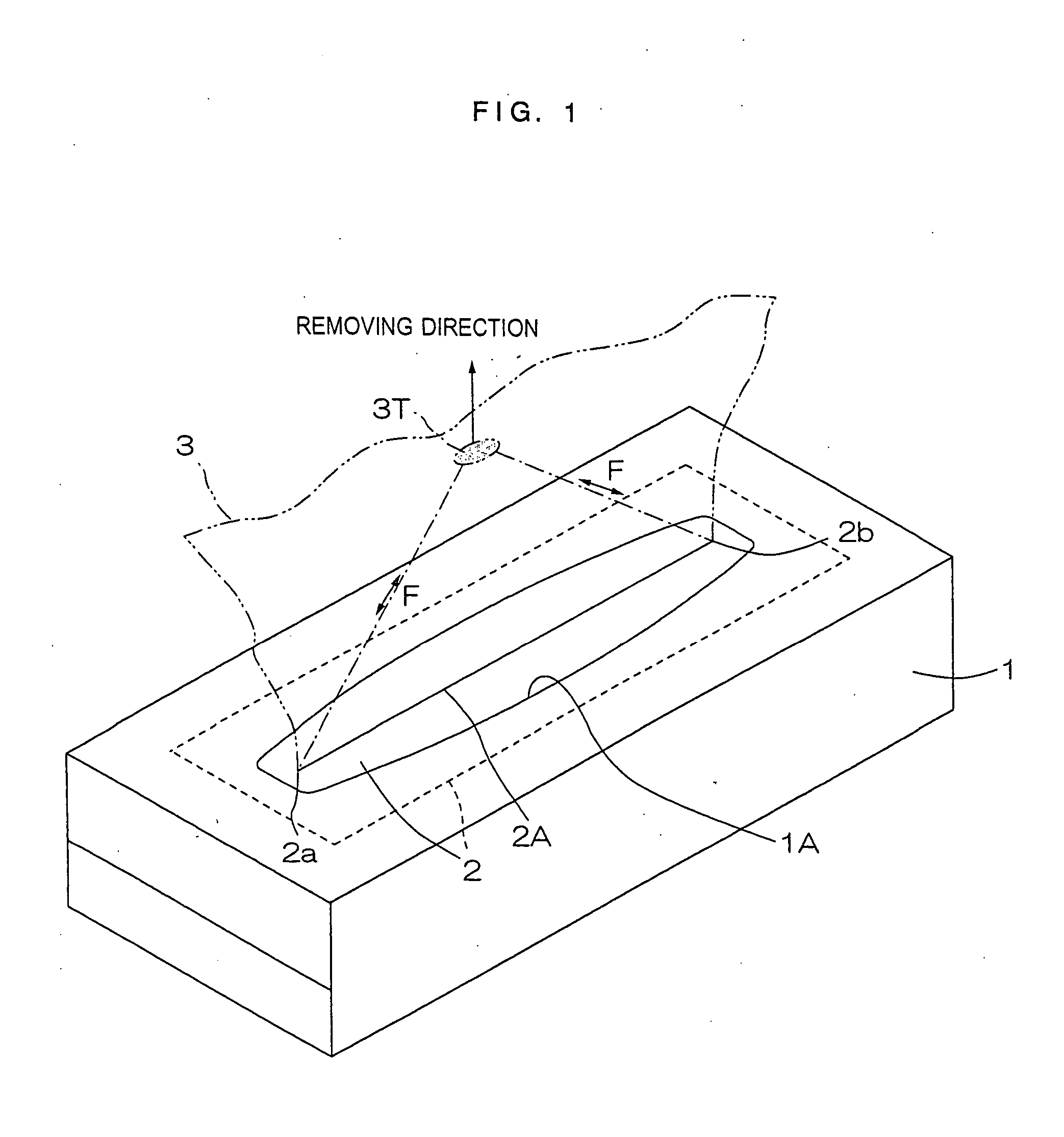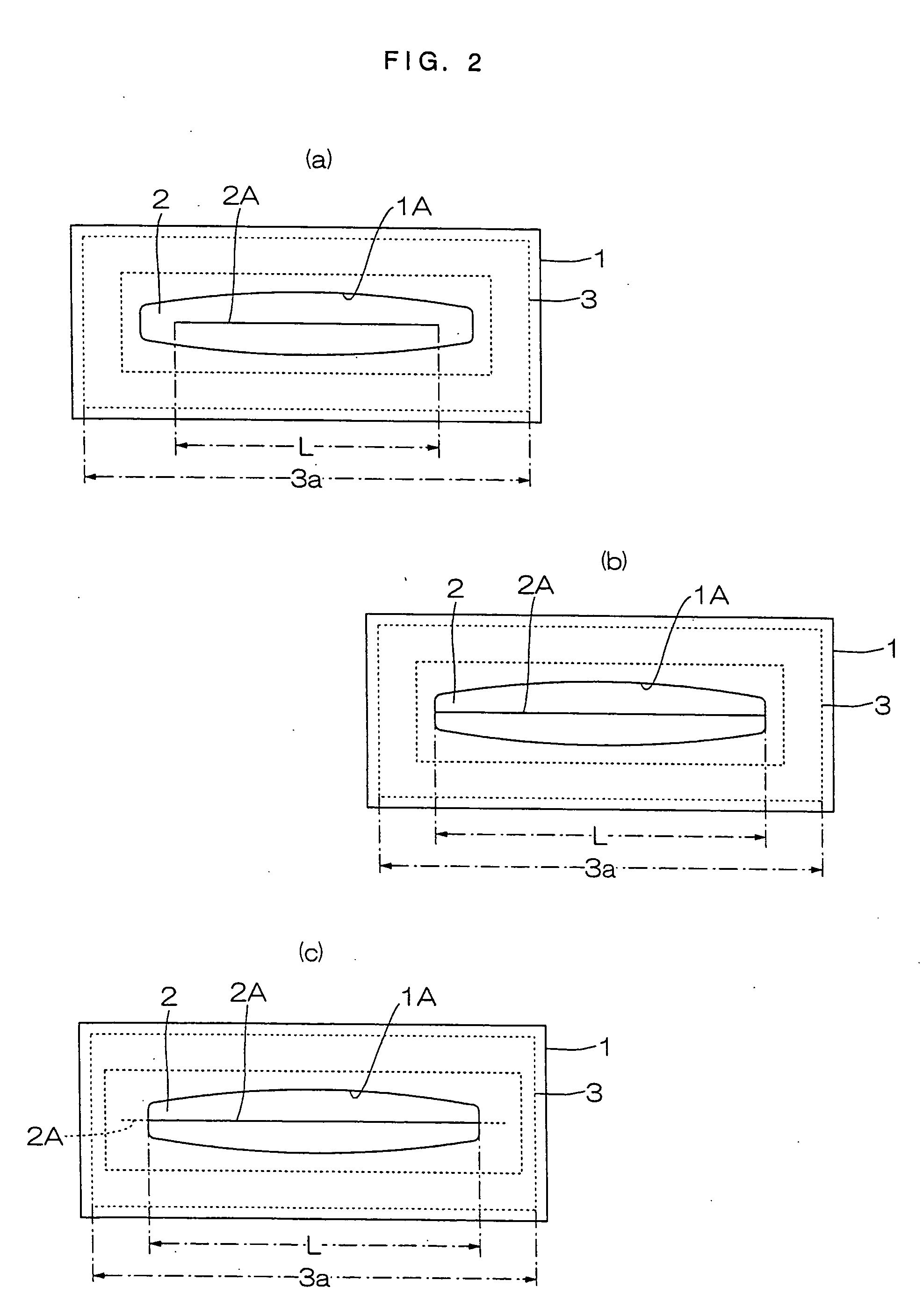Sanitary tissue paper, method of producing the same, carton box for sanitary tissue paper, sanitary tissue paper package, interfolder, and apparatus and method of conveying sanitary tissue paper package
- Summary
- Abstract
- Description
- Claims
- Application Information
AI Technical Summary
Benefits of technology
Problems solved by technology
Method used
Image
Examples
example 1
[0140] The tissue paper was checked for whether or not there is tearing or breaking of the paper on removal of the paper from the carton which has been described as the embodiment and for the flexibility of the removed tissue paper. The carton was 243 mm in length, 115 mm in width and 65 mm in height. The slit was in the form which is shown at (a) in FIG. 2 and had a length of 165 mm (about 72% of the lateral length of the tissue paper). The tissue paper was 197 mm in the longitudinal length, and 229 mm in the lateral size. One sheet of the tissue paper had a basis weight of 12.0 g / m2, the lateral tensile strength on a wet condition of 32 N / m, the ratio of the longitudinal tensile strength of on a dry condition to the lateral tensile strength on a wet condition (slenderness ratio) of 4, and a longitudinal elongation of 9%. Two hundred sets of double-plies, that is, total 400 sheets of the tissue paper was packed in a carton. Evaluation was conducted as follows:
[0141] The number of ...
examples 2 to 5
and Controls 1, 2
[0143] The tissue paper of examples 2 to 5 and controls 1, 2 was provided by changing the effective length of the slit, height of the carton, the lateral tensile strength on a wet condition and the slenderness ratio. The apparent density of the tissue paper when the carton has a height of 50 mm was 0.20 g / cm3. The results of evaluation were shown in Table 2.
TABLE 2Ratio ofCartonLateral tensilelongitudinal toEffective lengthheightstrength on a wetlateral tensileNumber ofof slit (mm)(mm)condition (N / m)strengthtorn sheetsFlexibilityExample 116565324.00∘Example 216565284.00∘Example 316550324.00∘Example 416550324.50xExample 516550284.00∘Control 116065324.03∘Control 216050324.07∘
(* effective length of slit: about 72% and 70% in case of 165 mm and 160 mm, respectively)
[0144] It was found that if the effective length of the slit was 72%, the number of tissue paper sheets which were torn on removal is decreased and that this effect was remarkable if the height of the cart...
example 6
[0145] The tissue paper of example 6 was provided by packing the tissue paper in which the longitudinal tensile strength of the tissue paper of example 3 having a slenderness of 4.0 was changed into 160 N / m and the basis weight and the longitudinal elongation was adjusted so that the recovery ratio of the tissue paper bundle which was left to stand at 60° C. be 20%.
[0146] (Controls 3 and 4)
[0147] controls 3 and 4 were provided by changing the longitudinal tensile strength and recovery in example 6. Evaluation results are shown in Table 3.
TABLE 3Example 6Control 3Control 4Longitudinal tensile strength160160180on a dry condition (N / m)Recovery ratio (%)202520Number of torn sheets060Flexibility∘∘x
[0148] B. An Embodiment of Inventions for an Interfolder
[0149] Now, an embodiment of the above noted invention will be described in detail with reference to sanitary tissue paper.
[0150] (An Example of Interfolder)
[0151]FIG. 5 shows a folded board type interfolder 5 which is provided by t...
PUM
| Property | Measurement | Unit |
|---|---|---|
| Force constant | aaaaa | aaaaa |
| Fraction | aaaaa | aaaaa |
| Fraction | aaaaa | aaaaa |
Abstract
Description
Claims
Application Information
 Login to View More
Login to View More - R&D
- Intellectual Property
- Life Sciences
- Materials
- Tech Scout
- Unparalleled Data Quality
- Higher Quality Content
- 60% Fewer Hallucinations
Browse by: Latest US Patents, China's latest patents, Technical Efficacy Thesaurus, Application Domain, Technology Topic, Popular Technical Reports.
© 2025 PatSnap. All rights reserved.Legal|Privacy policy|Modern Slavery Act Transparency Statement|Sitemap|About US| Contact US: help@patsnap.com



